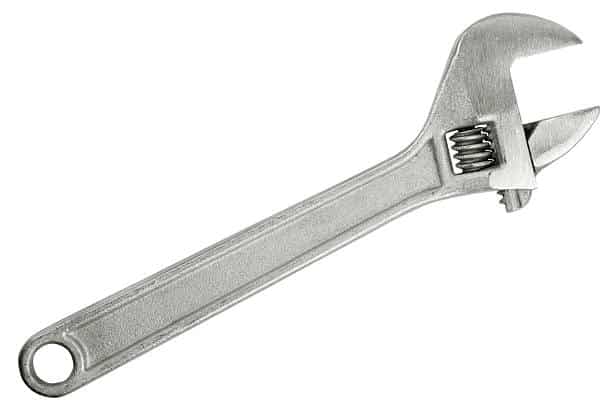Vinegar has long been a staple in households for its versatile applications, not only in culinary endeavors but also as a powerful cleaning agent. For household chores, two types of vinegar often come into play: cleaning vinegar and white vinegar.
While both are acidic and effective in various cleaning tasks, they do have some differences. In this article, we will explore the distinctions between cleaning vinegar and white vinegar and delve into their specific uses around the house.
Table of contents
What is Cleaning Vinegar?
Cleaning vinegar, also known as white cleaning vinegar, is a type of vinegar that is specifically formulated for use in household cleaning tasks. It is a white vinegar that has been distilled and, in some cases, has a higher acidity level compared to regular white vinegar.
The increased acidity enhances its cleaning power, making it more effective for certain cleaning applications. Cleaning vinegar is commonly used in a variety of household chores due to its acidic nature, which provides it with excellent de-greasing and descaling properties.
While both white vinegar and cleaning vinegar share similarities, cleaning vinegar is often manufactured with a focus on its cleaning capabilities, making it a popular choice for those looking for a potent and versatile cleaning solution.
Key Features
- Higher Acidity: Cleaning vinegar typically has an acidity level ranging from 6% to 8%, whereas regular white vinegar usually has an acidity level of around 5%. The increased acidity makes cleaning vinegar more effective in cutting through tough stains, grime, and mineral deposits.
- Versatile Cleaning Agent: Cleaning vinegar can be used for a wide range of cleaning tasks, including descaling appliances like coffee makers and kettles, removing hard water stains, cleaning glass and mirrors, and tackling stubborn soap scum in bathrooms.
- Deodorizing Properties: Like regular white vinegar, cleaning vinegar has deodorizing properties, making it useful for neutralizing odors in various areas of the home.
- Infused Varieties: Some cleaning vinegar products come infused with essential oils or other scents to help mask the strong vinegar smell, providing a more pleasant cleaning experience.
- Cost: While cleaning vinegar may be slightly more expensive than regular white vinegar, it is still generally affordable, especially considering its effectiveness in various cleaning applications.
Related Article: 12 Amazing Uses for Vinegar and a Usage Guide
What is White Vinegar?
White vinegar, also known as distilled vinegar, is a type of vinegar that is clear and colorless. It is a versatile liquid that is widely used in culinary applications, cleaning, and various household tasks. White vinegar is produced through the fermentation of distilled alcohol.
While white vinegar is a versatile and widely used product, it’s important to note that its strong odor may not be appealing to everyone. Additionally, its acidity can potentially damage certain surfaces, so it’s advisable to test it on a small, inconspicuous area before using it on a new material or surface
Key Features
- Acidity Level: White vinegar typically has an acidity level of around 5%. This moderate acidity makes it suitable for various purposes, including cooking, pickling, and cleaning.
- Production Process: The production of white vinegar involves fermenting grain alcohol, which is usually derived from corn or wheat. The fermentation process transforms the alcohol into acetic acid, the active component in vinegar.
- Deodorizing Properties: Due to its acidic nature, white vinegar has deodorizing properties. It can be used to neutralize odors in various areas of the home, such as the refrigerator or garbage disposal.
- Economical Option: White vinegar is often more affordable than specialized cleaning products, making it a budget-friendly choice for household cleaning.
Cleaning Vinegar vs. White Vinegar
Acidity Levels
- White Vinegar: White vinegar, also known as distilled vinegar, typically has an acidity level of around 5%. This level of acidity makes it effective for cleaning and disinfecting surfaces.
- Cleaning Vinegar: Cleaning vinegar, on the other hand, has a higher acidity level, usually around 6-8%. The increased acidity enhances its cleaning power, making it a more robust option for certain tasks.
Production Process
- White Vinegar: White vinegar is produced through the fermentation of distilled alcohol. It undergoes a thorough filtration process, resulting in a clear, colorless liquid.
- Cleaning Vinegar: Cleaning vinegar is often derived from the fermentation of grain alcohol. The additional steps involved in its production may include further filtration and dilution to achieve the desired acidity level.
Scent
- White Vinegar: White vinegar has a distinct, sharp odor that can be quite pungent. While the smell dissipates as it dries, some people may find it unpleasant.
- Cleaning Vinegar: Cleaning vinegar is sometimes infused with essential oils or other scents to mask its strong odor. This can make it a more attractive option for those sensitive to the typical vinegar smell.
Cost
- White Vinegar: Generally, white vinegar is more readily available and tends to be more affordable than cleaning vinegar. This makes it a budget-friendly choice for many households.
- Cleaning Vinegar: Due to its specific production process and sometimes enhanced properties, cleaning vinegar may be a bit more expensive than white vinegar.
Read this: 10 Amazing Uses for Baking Soda and Vinegar
Household Uses
Cleaning and Disinfecting
- White Vinegar: Suitable for general cleaning tasks, such as wiping down surfaces, cleaning glass, and disinfecting kitchen and bathroom areas.
- Cleaning Vinegar: Ideal for tougher cleaning jobs, such as descaling appliances, removing hard water stains, and tackling stubborn grime.
Deodorizing
- White Vinegar: Effective at neutralizing odors in the home, such as those from cooking, pets, or musty spaces.
- Cleaning Vinegar: Provides enhanced deodorizing power, making it useful for eliminating more persistent smells.
Laundry
- White Vinegar: Acts as a fabric softener, helps remove detergent residue, and can brighten whites.
- Cleaning Vinegar: With its higher acidity, it may be more effective at tackling tough stains and odors in laundry.
See this: How Does a Master Key Work on Various Doors?
FAQs
Yes, you can use white vinegar for many household cleaning tasks. It is a versatile cleaner with moderate acidity. However, if you’re dealing with tougher stains, mineral deposits, or stubborn grime, cleaning vinegar, with its higher acidity, may be more effective.
White vinegar has a distinct, sharp odor that some people find pungent. Cleaning vinegar is sometimes infused with essential oils or other scents to mask the strong vinegar smell.
While both cleaning vinegar and white vinegar are derived from the fermentation of alcohol, cleaning vinegar is specifically formulated for cleaning purposes and may not be as suitable for culinary use.
While cleaning vinegar is generally safe for many surfaces, its higher acidity could potentially damage certain materials, such as natural stone or marble.
Yes, white vinegar can be used as a fabric softener in laundry. It helps break down detergent residue, soften fabrics, and reduce static cling.
Conclusion
Both cleaning vinegar and white vinegar are valuable additions to any household cleaning arsenal. The choice between the two depends on the specific cleaning task at hand.
White vinegar is a versatile and cost-effective option for everyday cleaning while cleaning vinegar offers a higher acidity level for tackling more stubborn challenges. Experimenting with both types can help you discover the most effective solution for your cleaning needs, ensuring a fresh and sparkling home.
References
- Grove.co – What is cleaning vinegar and how does it work?
- Home.howstuffworks.com – Difference Between Cleaning Vinegar and White Vinegar?
- Thespruce.com – What Cleaning Vinegar Is and How to Use It





